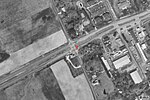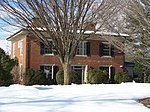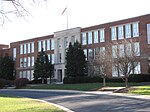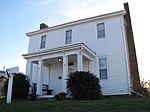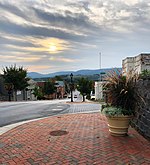Waynesboro Outlet Village

The Waynesboro Outlet Village, later rebranded Waynesboro Village, was an outdoor outlet mall in Waynesboro, Virginia, as one of Waynesboro's first attempts to make the town a shopping destination. In its heyday, the facility housed factory outlet stores and in later years housed a combination of outlet stores and offices for nonprofit organizations. Between its 1987 opening and spring 2006 closing, retail tenants included Bannister Shoe, Bass Shoes, Bugle Boy, Capacity, Christmas Goose, Corning-Revere, Crafters Corner, Fannie Farmer, L'eggs-Hanes-Bali, Liz Claiborne, Petal Pushers, Sam's Factory Outlet, The Paper Factory, The Ribbon Outlet, Royal Dalton, Tile Visions, Virginia MetalCrafters, and Westport Ltd. Non-traditional tenants have included the Artisans Center of Virginia, Borg-Warner Services, Computer Redistribution Team, Dance Augusta, Northrop Grumman Information Technology and One Child at a Time (OCAT).
Excerpt from the Wikipedia article Waynesboro Outlet Village (License: CC BY-SA 3.0, Authors, Images).Waynesboro Outlet Village
Shenandoah Village Drive,
Geographical coordinates (GPS) Address Nearby Places Show on map
Geographical coordinates (GPS)
| Latitude | Longitude |
|---|---|
| N 38.056194444444 ° | E -78.942666666667 ° |
Address
Shenandoah Village Drive 801,811,821
22980
Virginia, United States
Open on Google Maps
